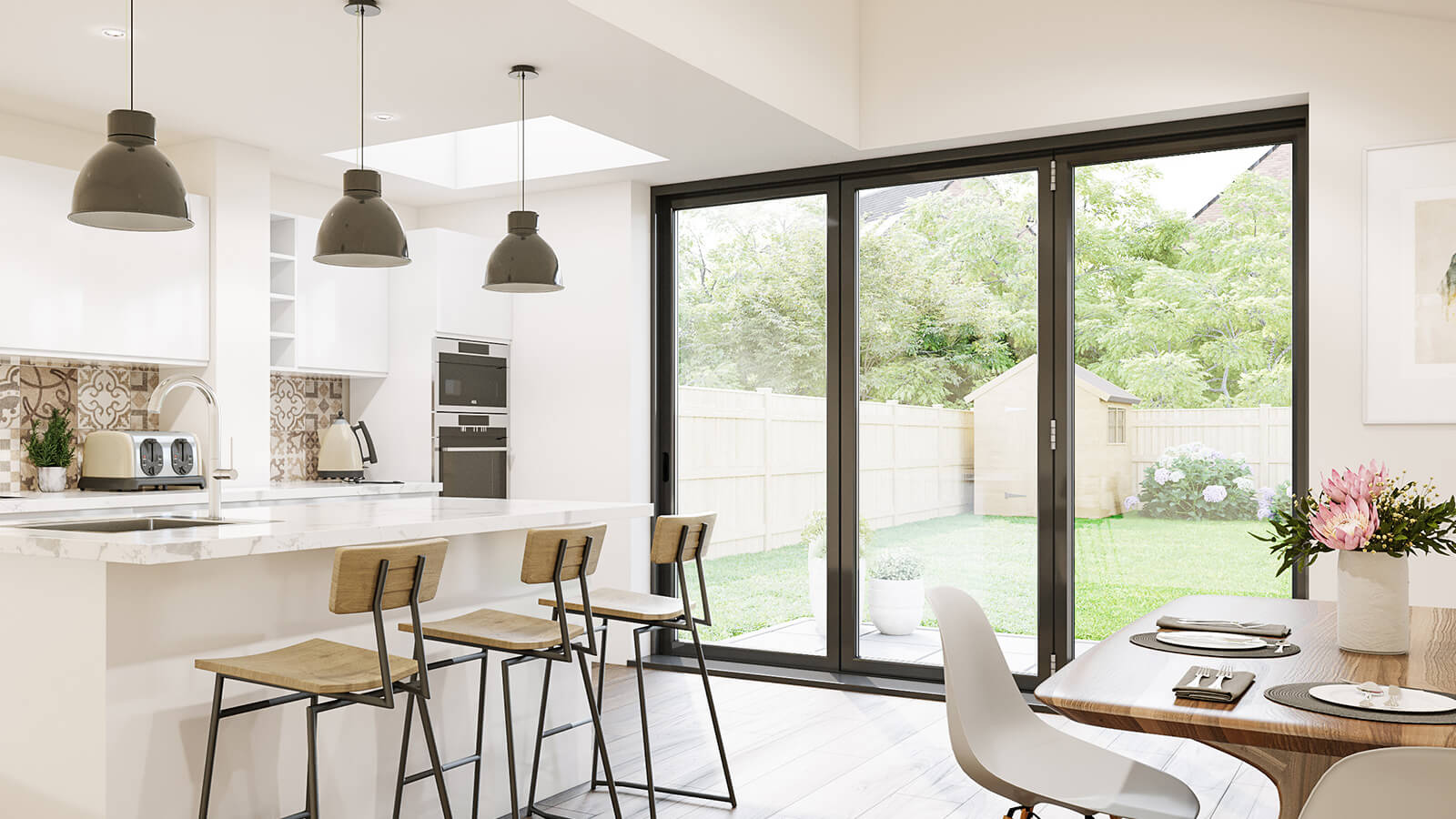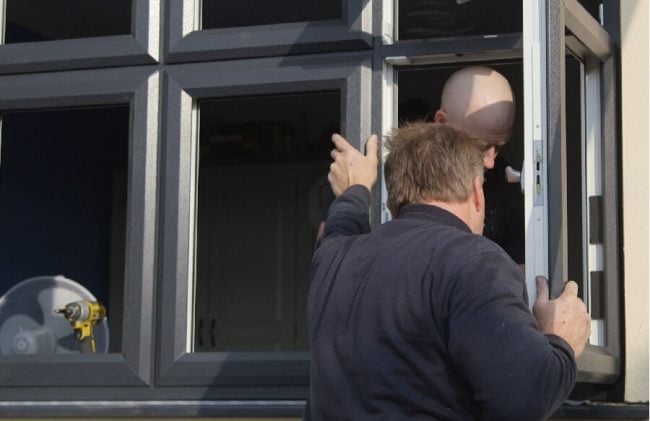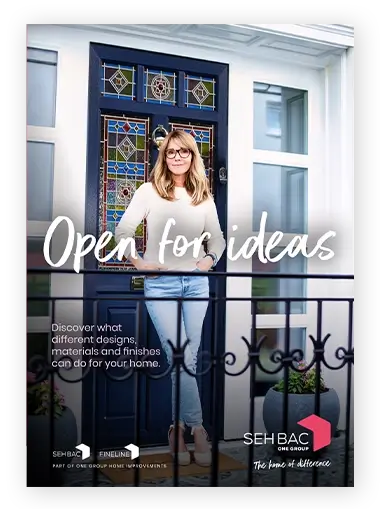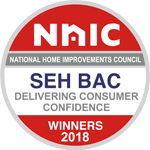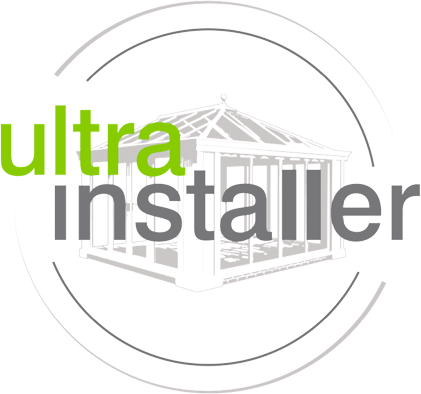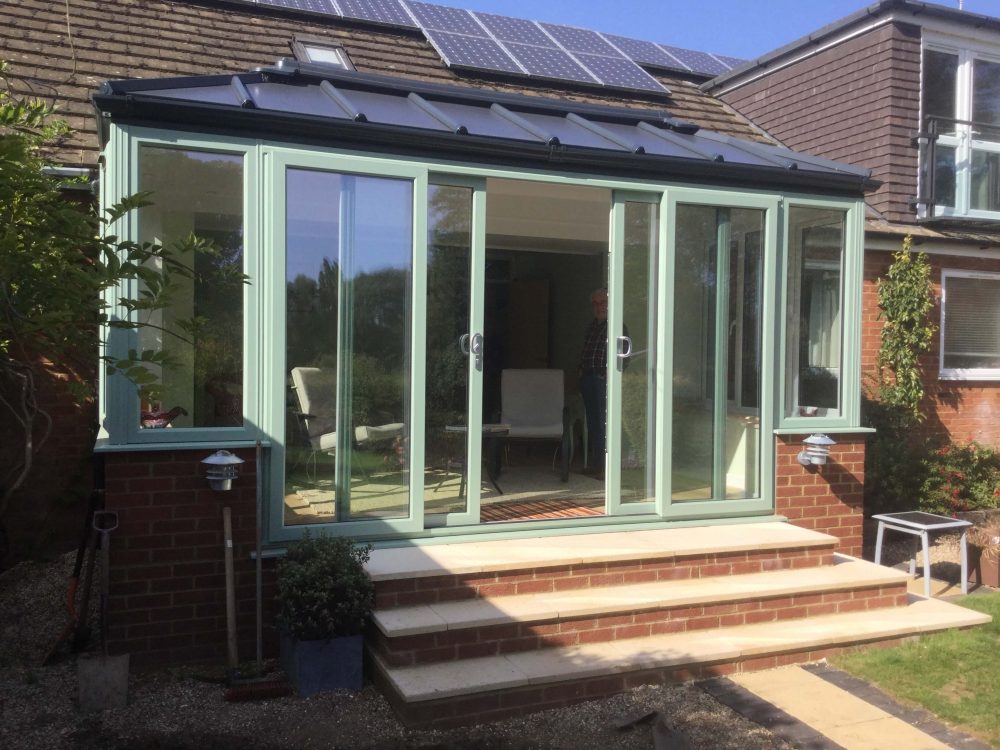
With high levels of thermal efficiency scheduled for 2025, to stay on track to meet the net-zero target in 2050, making buildings and homes as sustainable as possible has never been as crucial. So, if protecting the planet and reducing your energy bills is important to you, it’s time to consider the following options to make your new or existing extension space as sustainable as possible.
How do you create a sustainable extension structure?
1. Sustainably sourced materials and insulation
All of our building materials are chosen for their industry-leading manufacturing techniques, to ensure superior thermal capabilities and home security. We also strive to source local materials as it means less carbon to reach you.
We offer the most energy-efficient flat roof on the market too, perfect for modern, sustainable flat roof extensions and eco-friendly roof replacements. Plus, repairing an old extension rather than replacing it will reduce your impact on the environment too.
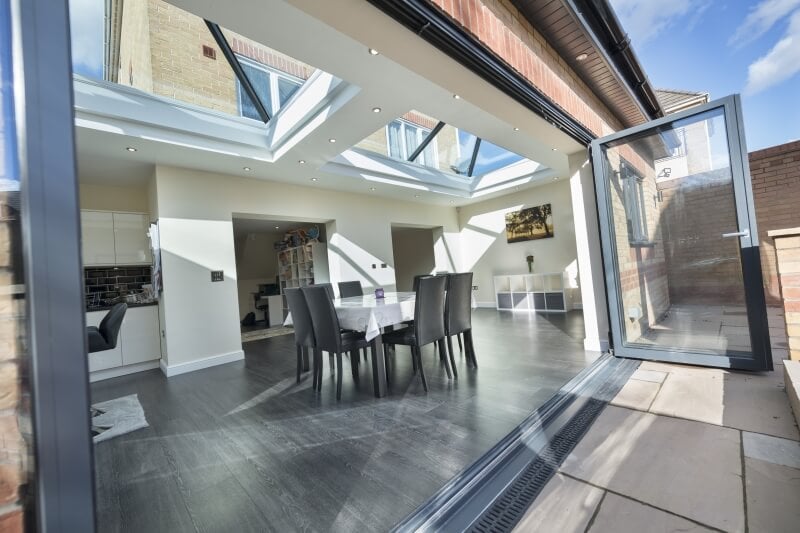
2. Sustainable A+ rated windows and doors
Did you know a draughty extension can account for up to 40% of wasted energy at home?… Combined with sustainable extension materials and insulation, A+ rated windows and doors will lower your carbon footprint further and reduce your energy bills. Our quality double glazing, solar control glazing, and superior Comfort glass products can achieve the highest energy ratings, keeping as much heat inside as possible and only letting out as much heat as they let in from the outside.
Glazed roof panels and striking roof lanterns can let in even more natural light, reduce energy usage, and lower the demand for fossil fuels and carbon dioxide levels in the atmosphere.
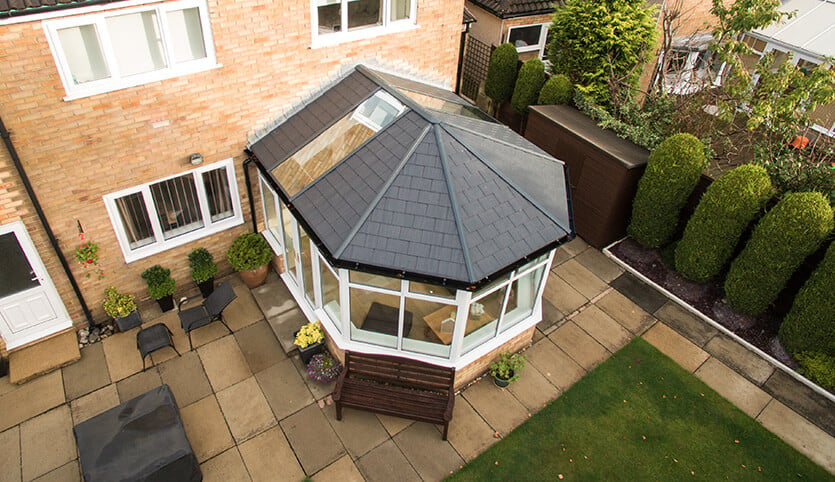
3. Sustainable heating
How will you heat your extension? Or can you upgrade an existing extension with any of these modern sustainable heating ideas?
- Swap radiators for underfloor heating
Underfloor heating uses less energy; saving about 25% compared to traditional radiators, and up to 40% when combined with a heat pump.
- Solar panels
Typical residential solar panels produce between 250 and 400 watts each per hour.
- Thermostatic radiator valves (TRVs)
Only heat the rooms you’re using.
- Geothermal heating
- Heat pumps
- Biomass boilers
- Infrared heaters
4. Sustainable lighting
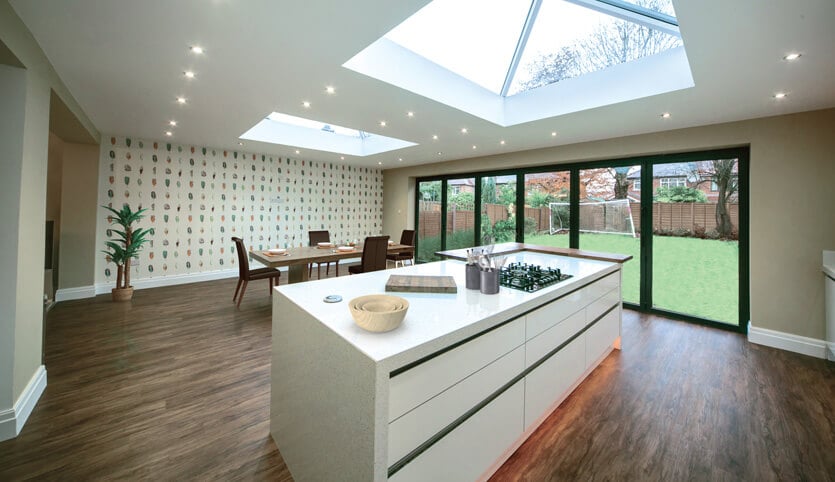
Lighting accounts for around 15% of a typical household’s electricity bill, so it’s definitely worth considering these sustainable lighting solutions too.
- Switch to LED lighting
LED lights are up to 80% more efficient than fluorescent lights, converting 95% of their energy into light. You can save £2-3 per year for every old halogen bulb you switch.
- Light sensor technology
Allows you to switch lights off automatically, potentially reducing electricity use by 30%.
- Tactical task lighting
Practically placed task lighting, like a reading light or under cabinet lights, keeps energy consumption low and visual clarity high.
- Dimmer switches
Reduces energy consumption further and prolongs the life of your light bulbs.
- Strategic paint colours
Cooler, neutral shades will make the space feel bigger, lighter, and brighter. Using low VOC paint will lessen your environmental impact even further, as it contains less volatile organic compounds than traditional paint.
Eco-friendly glazed extension installations in Essex, Suffolk, Hertfordshire & Surrey
Our unique extension 3D design service allows you to create your sustainable home extension right in front of you. Use our innovative roof designer, get a price, visit your nearest SEH BAC showroom, or contact us online to get your eco-friendly extension underway.





